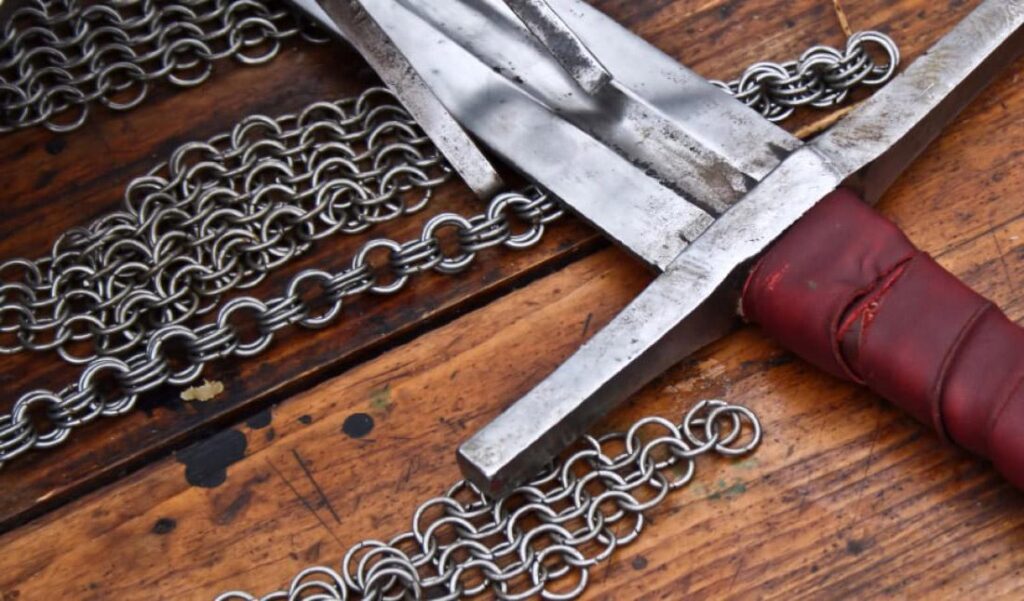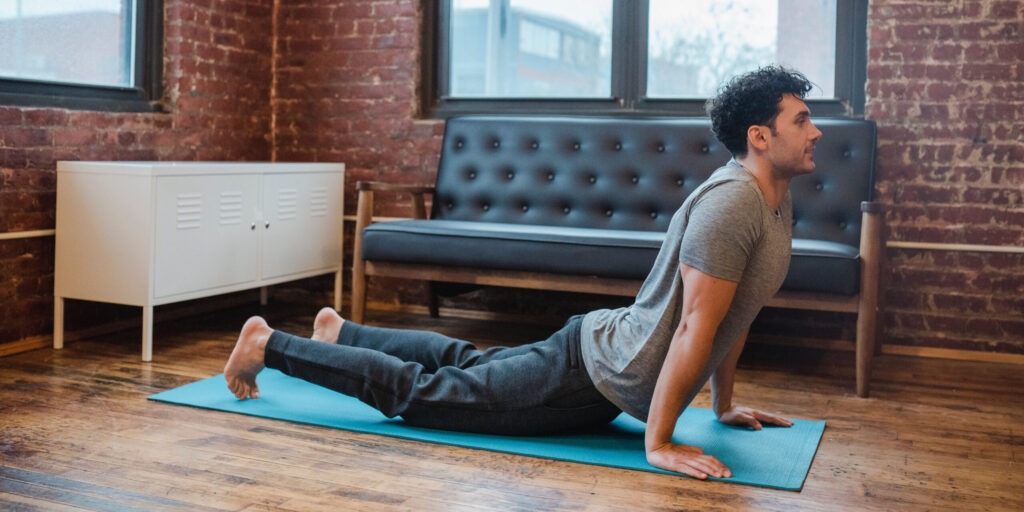3 Injury Prevention Tips for Rapier Fighters

One of the things I focus on in my recent book Introduction to Italian Rapier is healthy bio-mechanics. These are important not just for performance but for your long-term health. Martial arts done well can improve your strength, endurance, and physical comfort. But done poorly, they can have the exact opposite effect, leading to strain, pain and injury. In this article I dive into three of the most common areas of strain and pain I see in the pursuit of the art of rapier (though they’re common to many sword arts).
Now I’m not a doctor or a physio therapist, so all I can share with you is my own knowledge from consulting such folks and years of in-the-field experience as a teacher and practitioner. If you are currently experiencing notable problems (regular acute or chronic pain), I recommend you immediately go see a professional. Look after your body now so it can look after you later. So let’s get to it.
Sciatic Pain: aka Pain in the Butt (or leg)
The most common injury that I come across in my time teaching rapier is not an acute one but a chronic one: pinched sciatic nerve. The sciatic nerve is the longest nerve in the body, running from the lower part of the spine, deep through the buttock, and all the way down the back of the leg to the foot. Sciatic pain can come directly in the lower back, but in rapier fencers is often experienced as sharp or burning pain in the buttock or back of the thigh. This usually occurs on the non-dominant side (the one that takes most of the compression in an Italian style rapier posture).
There are two common aspects of rapier posture that seem to aggravate this nerve: 1. Over-development of one side of the lower body. 2. Twisting always in one direction (ie standing in profile and twisting toward your right side). The nerve is generally aggravated by disk compression or herniation, but can also be caused by spinal twisting or exercise-induced scoliosis.
My sports doctor reports to me that it is not uncommon among golfers and tennis players, as well as others who participate in almost any single side dominant sport. As one side becomes more dominantly developed than the other it can put pressure on the discs of the lower back and thus onto the sensitive nerve roots.
One of the best things you can do to help prevent this is to focus on even development of both sides of your body. Make practicing with your right and left hand a central part of your training. Even in two-weapon fencing, be sure to practice rapier & dagger and rapier & buckler as a right hander and a left hander (i.e., swapping which hand you hold both the sword and the secondary). A few tips to make this happen:
- Practice drills equally with your right and left hand. If you are currently uneven, practice more with your weaker side to help catch it up. Be aware, this might mean doing a little less with your dominant side rather than doing more with your non-dominant side. It’s easy to over do it at the beginning with your non-dominant side and give yourself a strain. Remember your first goal is ‘balancing’ the sides.
- In any drilling sequence, start with your non-dominant side first. This will help ensure that if you cut your practice short for any reason your typically neglected side will have gotten priority attention.
- Use a timer when you are sparring in practice and set it for 30-second or 1-minute intervals. Every time it rings, switch hands. Timers are better than simply switching hands every bout. I find that bouts with the dominant hand usually last longer, so your non-dominant side tends to fall behind if you’re not using strict timing.
How you stretch and cool down can also help with alleviating strain. Do twists and stretches more toward your non-dominant side than your dominant. My sports doctor recommend that I do a twist stretch toward my left side (the opposite of the way I twist for my dominant rapier posture) twice as much or for twice as long as my right. He also recommended that I do a left leg hamstring stretch twice as much as the right. His comment “If you’re working out unevenly, you need to cool-down unevenly, and with counter-motions to your training.”
Knee Pain
Knee alignment is essential to powerful bio-mechanics and positive knee health. Rapier postures, and in particular attacking movements, put a lot of load onto knee joints. Having them track correctly along the leg and foot is essential to keeping the join healthy, not putting strain on ligaments, and to avoid grinding down cartilage.
I have had many tips on this topic over time but most of my favorite approaches currently come from Kelly Starret’s work. Unfortunately his videos are actually rather hard to follow, so I made my own that brings together some of his ideas along with my own sword specific experience. Check it out:
https://youtu.be/VdPSloftz6Y
Note: a couple people asked about my rounding my back when I was hanging out at the bottom of my squat. This is a “resting squat” (easier to sit in for a long time—especially if you have tight ankles like I do). If you plan to bear load (like a barbell) on your shoulders you’ll need to keep the straight back position I demonstrate throughout (as I show when doing the full squat). Check out the squat article on Wikipedia for more info on back position for weight lifting.
Wrist Strain
The wrist is a very complex formation of the hand and lower arm. There are so many reasons you might experience wrist pain in fencing. Most often the cause is something you’re doing in you regular life, like typing, rather than your athletic activities. If you have ongoing wrist issues, definitely consult with a professional.
Rapiers are relatively heavy swords, and it is not uncommon at the beginning, and especially for those with smaller wrists, for the weight and movement of them to create some strain. This will particularly aggravate anything that’s already going on in your wrist.
If you find that your rapier work seems to be overly tiring, or causing pain in your wrists, here are a few things that can help:
- Use a shorter sword or a lighter blade.
Sword length and blade weight are the things that put strain on your wrist more than overall sword weight. Though there are certainly historical and tactical ideals that are connected to blade length and weight, the most important thing is to have a sword that you can actually practice with, without it hurting you. Balancing your sword so that its point of balance is closer to your index finger will take strain off of your wrist. This can be accomplished by having a shorter length, thinner blade, or heavier pommel. Be aware that having a heavier pommel might take strain off your wrist while increasing it in your elbow or shoulder. You can always start with a lighter sword and then build toward your ideal length as your wrists and hands get stronger. - Support your retinaculum.
The flexor and extensor retinaculum are ligaments that together wrap around the tendons and bones of your wrist (like a wrist band) holding them together. Some types of carpal tunnel syndrome come from inflammation in the ligaments within this band causing a restriction as they expand. However in grip related activities (tennis, golf, fencing, weight lifting), the strain on the wrist can come from a weakening or extension of this band. For many, adding in additional wrist support can alleviate much of this strain. Using weight lifting wrist supports or using a non-flexible band around your wrist (snug but not tight) can take away a lot of fatigue. You’ll need to experiment with tightness and band width. Again, if you’re experiencing anything acute and ongoing, seek professional advice. - Strengthen your wrists.
Sword fighting itself will strengthen your hands and wrists, provided that you don’t overdo it. Small muscles need regular and long-term, non-straining, workouts to build strength. Be sure to train regularly (every couple days is ideal), don’t train your wrists to exhaustion, and if you do overdo it, allow yourself sufficient time in recovery for the symptoms to go away before you dive back in to your regular training routine.
If you can’t spend time sword in hand on a regular basis, you can train your grip strength, which will in turn help your wrist, by squeezing a tennis ball. Squeeze for ten seconds, release for ten seconds. Perform ten reps per side.
Know Your Pain
It can be easy to ignore aches and pains in a hope that they’ll go away or out of a fear that we’ll learn something that will force us to stop doing what we love. I completely understand the thinking but also know that ignoring pain is usually what leads to the negative outcome. Whether that comes from doing more damage or simply causing new damage by “favouring” the pain in some unhealthy way. Get over your fear of pain and become friends with it instead.
- Use pain as your starting point for exploration.
When you are experiencing pain, don’t shy from it but instead gently explore it. What are its limits, places, and ranges. What types of motions aggravate it and what leads up to or follows it? - Make your health professional visits a part of your education.
I have learned a lot not just about health but about performance from my time with physio therapists and sports doctors. My practice is better for it in every way. - Pursue prevention rather than treatment.
The more educated you can be on potential causes of injury, the more you can do the foundational work to prevent them. And fortunately things that promote good physical health tend to also promote overall performance.
I love to get more leads on injury prevention and health. If you have any particular tips, share them in the comments! When checking out tips from this article, or those in the comments section, be sure to research any injury prevention or treatment strategies before employing them.
Happy and healthy training everyone!
Devon





Responses